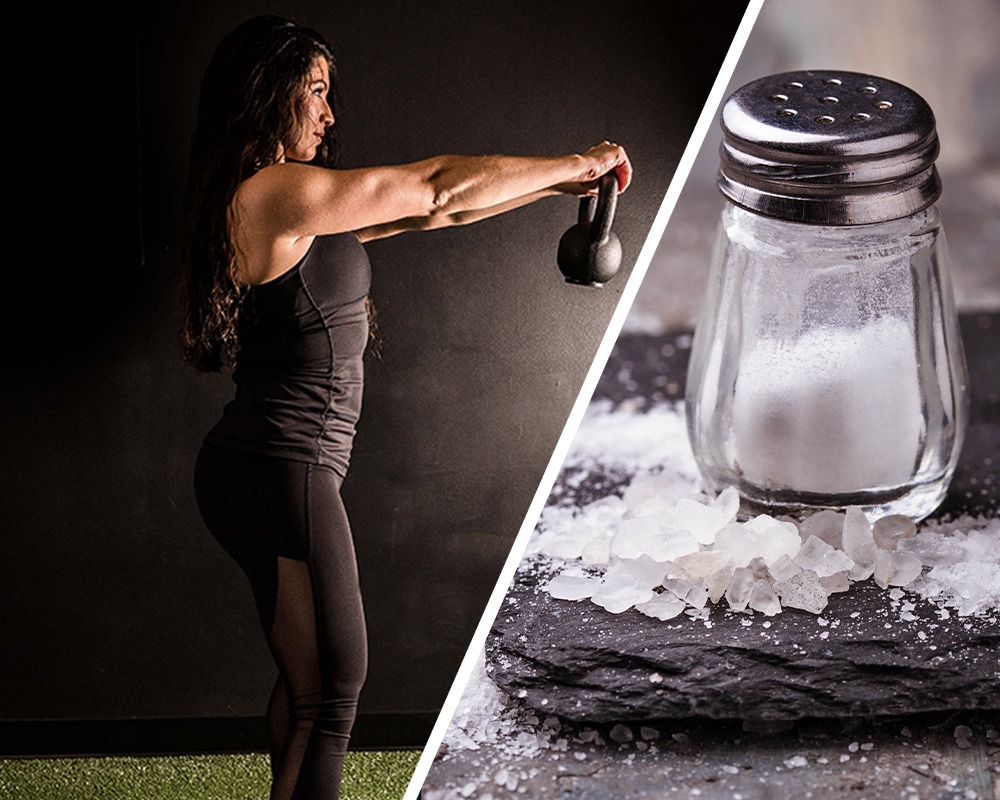Sodium often gets a lot of heat for being “unhealthy”, but did you know that sodium is actually required for good health?
Our body needs sodium to function properly. It is a nutrient, specifically an electrolyte, and it works to keep your blood and the fluid surrounding cells balanced. It also maintains normal nerve and muscle function, regulating their process. Sodium keeps you properly hydrated, preventing muscle complications and cramping, as well as providing for healthy muscle contractions. Without adequate amounts of sodium intake, we actually put our bodies at risk.
With all that being said, the average American actually consumes plenty of salt. 75% of an individual’s sodium is consumed through diet and this isn’t hard when it adds great flavor to food. In the fitness industry, specifically, when it comes to meal prep, a majority of people are concerned about their sodium intake and eating a low-sodium diet- but is it right to have these concerns? How much sodium should we actually be consuming, healthily?
The established guidelines for daily salt intake are often debated and have been found controversial as like many health-related situations, everybody is different and an individual’s required sodium intake often varies. Not everyone requires or benefits from a low-sodium diet.
Your body needs less than 500 mg a day to properly function, but this is a highly unrealistic guideline when trying to achieve all nutrient goals. Therefore experts tend to fall within a range that allows for a healthy diet and a healthy sodium intake.
The American Heart Association recommends you stay under 2300mg a day and ideally the average adult should have no more than 1500mg per day. The Institute of Medicine agrees, recommending that healthy adults consume 1.5 g of sodium per day.
Health risks can arise with over or under consumption. The main health concerns associated with overconsumption of salt are high blood pressure and a higher risk for heart disease, although these health risks have recently come under fire, with not enough evidence to back up that reduced salt intake decreases the risk of these health concerns in individuals. Many experts in recent years have debated that reducing salt intake can be more harmful than beneficial.
When it comes to highly active individuals, however, these guidelines don’t always apply. The American Heart Association notes that the suggestion of 1,500 mg a day should not be followed by individuals who are highly active or sweat often such as competitive athletes or workers in high heat situations. You excrete sodium when you sweat, so while you shouldn’t necessarily aim to increase your sodium intake, you don’t need to be as strict as someone with a sedentary lifestyle. The typical American consumes well over the recommended intake of sodium so be aware of your sodium intake prior to attempting to replenish it.
For active individuals, sodium is vital to maintain good health. Sodium is required for nerve transmission and muscle contraction, and low sodium intake can cause muscle cramps. Replacing the sodium lost during periods of sweating improves recovery time and moderates fluid levels. This normalizes electrolyte levels in your body. Everyone sweats at different levels and intensities, so the replacement of sodium varies per individual. If you’re a heavy or “salty” sweaters, you increase your risk for sodium deficiency. Make sure you are aware of your sodium intake to prevent this.
If you want to get particular, the American College of Sports Medicine recommends that athletes weigh themselves prior to and directly following exercise to determine sweat loss. For every pound lost in sweat, consume 16 to 24 ounces of carb-electrolyte fluid. These include 6-8 percent carbohydrates and .5-.7 grams per liter of sodium. You can also replenish the lost sodium in your diet by adding it to your food.
In the fitness industry, salt is often avoided with the fear that it will cause water retention. When done correctly, salt shouldn’t affect your training and when manipulated, high salt intake can actually improve your cut. When training for a show, sodium levels should be maintained instead of cut, even in the final weeks of cutting. With carbohydrate intake low, if sodium levels are insufficient, muscle cramping and muscle tears become common. Low sodium can also lower your blood volume, reducing muscle fullness and vascularity. Consult a trainer or diet coach for your specific needs when prepping, but the average individual training to reach workout goals should not be overly concerned with salt intake.
The takeaway from all of this is to be aware of your sodium intake, but don’t sweat it (pun intended). If you’re in the gym multiple times a week, don’t worry about cutting your salt or having a low sodium diet due to the excretion of sodium in sweat during training. If you are eating clean food without much sodium, replenish this nutrient to prevent cramps and injuries. Enjoy your meals and salt them too.
*Medical conditions and specific health needs require special nutrition instructions. Please consult a doctor or a certified professional for medical advice.
Strazzullo, P., & Leclercq, C. (2014). Sodium. Advances in nutrition (Bethesda, Md.), 5(2), 188–190. doi:10.3945/an.113.005215





